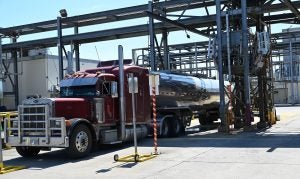All synthetic pesticides sold in the United States are required to be registered by the Environmental Protection Agency, and it takes a lot of time, science, and money to get a pesticide onto the store shelf. The Federal Insecticide, Fungicide, and Rodenticide Act (FIFRA) outlines the legal language that gives the EPA the power to regulate pesticide development and use.
In all, the insecticides, herbicides, rodenticides, and other such products that are so common in agriculture and among many households go through a complex and arduous process to make sure they are scientifically shown to be safe when used according to the label.
For a pesticide to be created, first a company must identify a problem in the field to solve. Pesticides generally are a means to address weeds, insects, fungus, nematodes, and bacteria, among other things. These products can be applied to all kinds of situations, whether they are used on animals, homes, lawns and landscape, row crops, or something else — and, in the case of herbicides, depending on the specific product being developed, they might be suited for use before weeds sprout or afterward.
Pesticides — which can be made up of a variety of ingredients, some of them active and some inactive — have the potential to cause harm, since their main objective is to control living things, which is why they are so tightly regulated. An active ingredient is the actual mechanism in which a pest is controlled, whereas inactive ingredients are used as mechanisms for the application and stability of the product as well as to support the active ingredients.

Pesticides that use existing approved active ingredients for new uses, such as an ingredient typically used on tomatoes that could now solve a pest problem in squash, are generally less expensive and easier to get approved since most of the research and scientific backing already exists. New active ingredients have a much more extensive process to go through. Either way, the science and the regulatory authorities examine the ingredients individually as well as how the active and inactive ones interact with each other.
To get a new active ingredient product approved, there are a significant number of studies a company must complete first. These scientific studies are extremely expensive, many of them costing over $150,000 — and some of them even costing millions of dollars! It is extremely important these studies are conducted to affirm the safety and efficacy of any product seeking approval. The intended use of the product will dictate what studies need to be completed before a company can even attempt to register their product.
Once a registration is submitted for approval, the EPA goes through the process of review.
The EPA will review the ingredients of the pesticide, the particular site or crop where it is to be used, the amount, frequency, and timing of its use, along with storage and disposal practices. The procedure helps assess any environmental or human health risks the products pose. The application from the company will give the EPA details on the data collected from the research studies conducted, this data is then subject to an extensive scientific peer review to ensure it is correct. The EPA is especially concerned with potential harm to humans, wildlife, fish, and plants, or the contamination of surface/ground water. These risks include short-term toxicity issues, long-term effects like cancer or reproductive disorders, and of course the risk of death.
» For more information on how pesticides are registered, visit the EPA website.
Development, research, and approval of a pesticide can take years, and in some cases, even more than a decade. The label of a pesticide product is considered a legal document, so you can understand why a lot of time is spent ensuring every last detail is right. Companies invest a lot of time and money into new pesticide products, but the approval and subsequent renewals all focus on the potential impact to human health and the environment.
You can rest assured that any pesticide product has gone through rigorous scientific testing and is safe to use as instructed on the label.
Michelle Miller, the “Farm Babe,” is an internationally recognized keynote speaker, writer, and social media influencer and travels full time to advocate for agriculture. She comes from an Iowa-based row crop and livestock farming background and now resides on a timber farm in North Central Florida.


